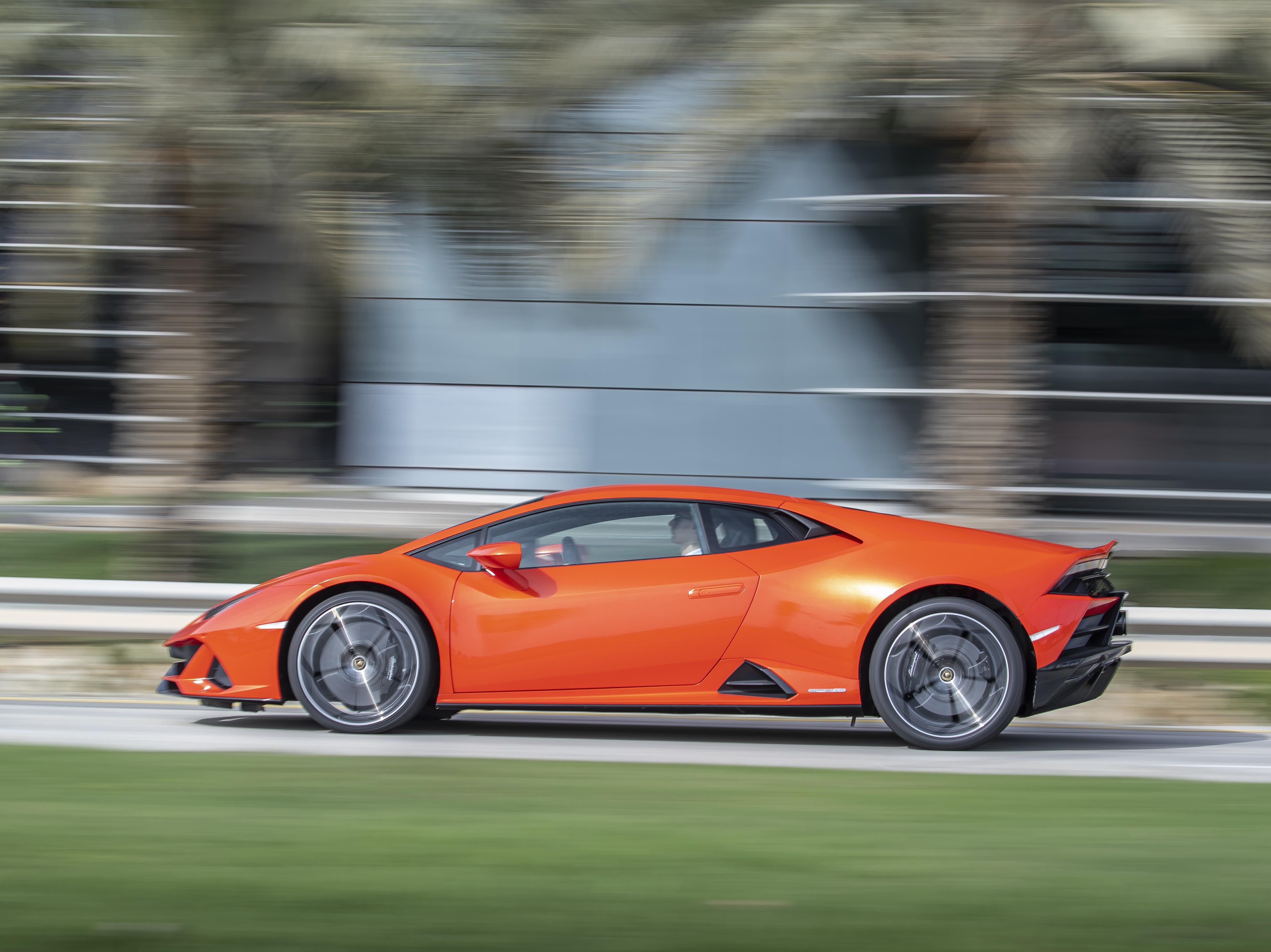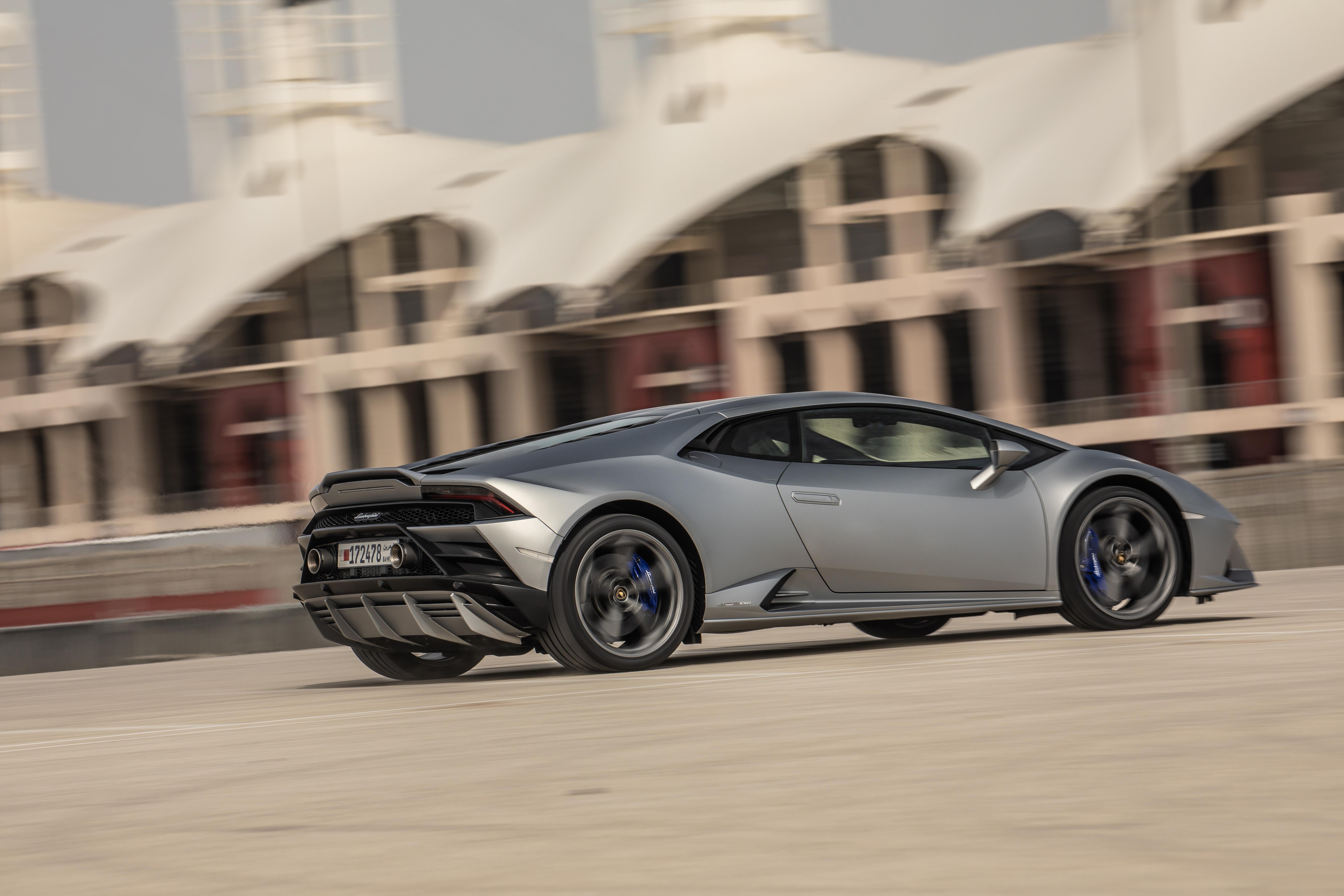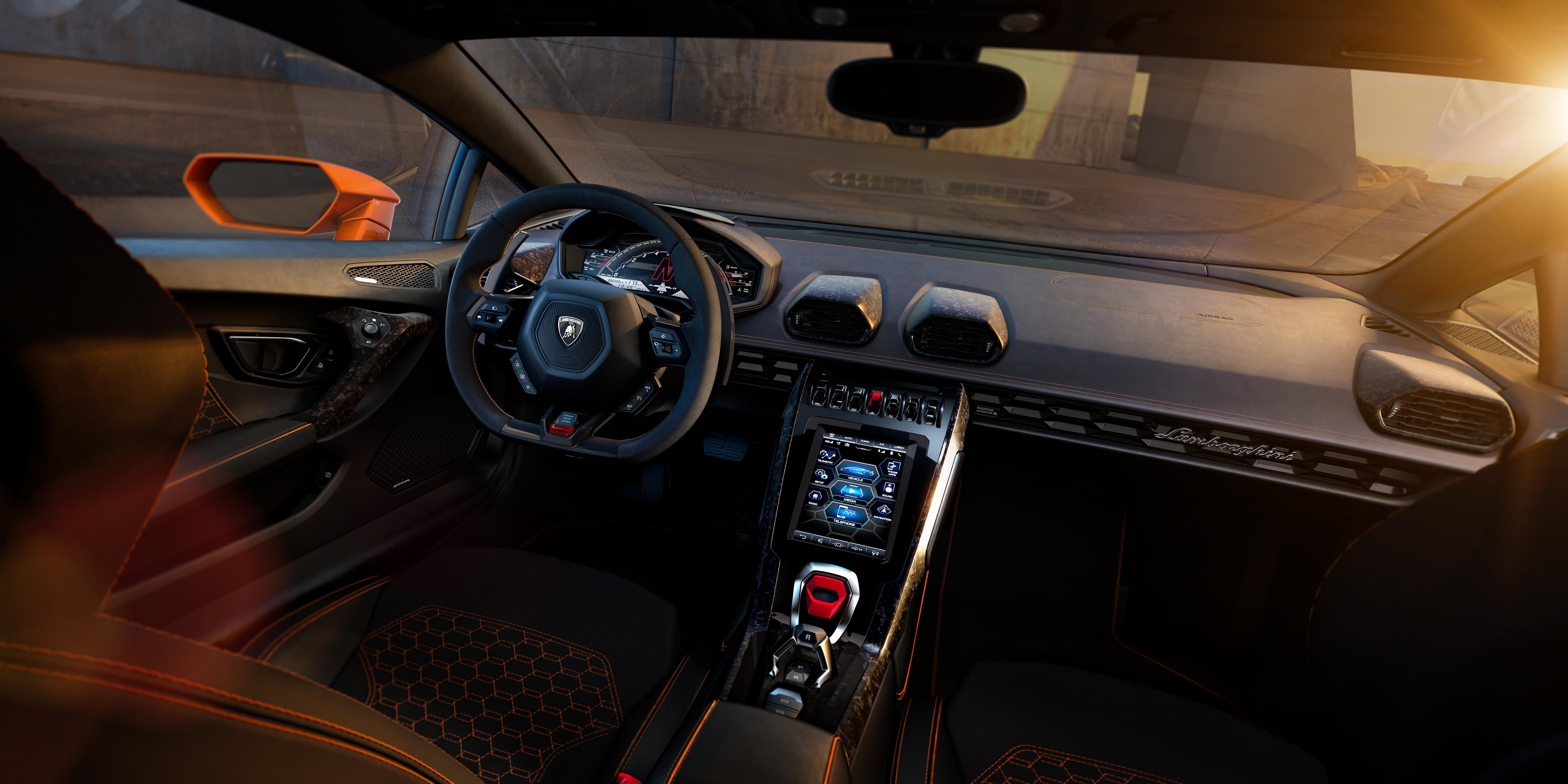Lamborghini Huracán EVO review: The supercar is going green - we tried their new sustainable ride
As the Italian supercar manufacturer launches its most successful V10-powered model yet, Michael Booth tries it out

Do I feel guilty? Goes without saying. Do I feel guilty for flying to Italy on non-essential business? Yes, that too. I could have taken the train. Do I feel guilty that I am now driving around the Modenese countryside in a Lamborghini Huracán EVO which does 20mpg and emits 332g/km of CO2? Well, Lamborghini insists that I should not, and I am here to find out why.
The Italian supercar manufacturer has loaned me this bright yellow V10 supercar car prior to tomorrow’s programme of yoga, bee-keeping, forest walks and e-biking. It sounds a bit green-washy but I’ll also be granted time with the CEO, Stephan Winkelman.
I am here, along with journalists from Russia, the Middle East, France and Germany, as a damage-limitation exercise because, last month, the Italian minister for ecological transition, Roberto Cingolani, lobbied the EU for an exemption for niche, high-performance car companies like Lamborghini and Ferrari from their planned cut-off for the manufacture of combustion-engined vehicles in 2035. There was outrage from environmentalists. Porsche boss, Oliver Blume, weighed in: “De-Carbonisation is a global question and everybody has to contribute,” he finger-wagged.
It was all a bit embarrassing for the companies in question particularly because Cingolani’s lobbying wasn’t required. Lamborghini had already planned a record investment of EUR1.5bn in its green transition, and the factory has been CO2-neutral since 2015, despite doubling production. (Business is booming. They built 7,500 cars last year and order books are full ten months ahead.)

I skipped the yoga, but I did get to meet the Lamborghini bees - part of an environmental monitoring project created together with Bologna University. The 13 hives live within Parco Lamborghini, a seven-hectare oak forest planted ten years ago adjacent to the factory. The company’s head of environmental matters, Massimo Scarpenti, told me that the bees die if the air is too dirty, but their research has shown local agriculture to be the culprit, not the local car factory. I wondered how the farmers took this from a company that builds super-polluters? “They believe in us,” Massimo assured me. “They have seen we have been doing this environment work since 2010.”
We rode electric bikes to the local district heating plant where cornflour is fermented to produce methane. Keeping warm by cooking polenta: a very Italian solution. It provides 10 per cent of the Lamborghini plant’s warmth and cooling. At the factory, I learned how they recycle their carbon fibre offcuts (the carbon fibre does, though, come from Japan), and in the paint shop, we were told they now use mostly water-based paints which means less nasty waste.
Talking to various Lamborghini employees, from the CEO down, I sensed a frustration that their decade-long environmental efforts aren’t more appreciated, but also a frustration that they can’t really make the argument that I, as a supercar fan, usually make on their behalf: Toyota makes more cars in two days than Lamborghini has made in its entire existence. Its cars cover around 30,000 miles during their entire lifetime, compared to c250,000 for a Toyota, and they tend to be cherished in perpetuity - significant when you consider that around a third of a car’s lifetime emissions come from its manufacturer and recycling. But they know they can’t really make that argument out loud. It’s an image problem I suspect.

Perceptions of Lambo owners fall into two camps: silly old men like Rod Stewart, Steve Coogan’s Portuguese singing sensation, Tony Ferrino, or Jay Kay (also my category, if ownership wasn’t always so tantalisingly 100 per cent out of reach), or silly young men who peacock noisily around Knightsbridge during the summer. Similar to Burberry’s problem with their more oik-ey customers, I suppose. Then again, cars like these are literally designed to grab attention. Conspicuity is their game, so Lamborghini can’t really complain about the type of attention they grab. And there is no way around those emissions figures, at least, not with a V12 behind your ears. Or is there?
“Our footprint in terms of CO2 emissions is almost equal to zero,” CEO Winkelman assured me. He meant the factory but he did also make the argument about how little in comparative real terms the cars pollute. “But we take this very seriously, which is why we have announced that for 2023 and 2024 we will hybridise all our line-up and reduce CO2 emissions by 2025 by at least 50 per cent.” This is total emissions: factory, car exhausts, suppliers. The dapper Bavarian, also the boss of Bugatti, continued. “And in the second part of the decade will come the first battery-electric vehicle.”
An all-electric Lambo. But what about the combustion engine, the V12, the soul of the company? A new, more efficient hybrid V12 is on the way, he said. “And after 2030 we will have a clearer view of [whether] to hybridise or go electric. Perhaps we can manage emissions by other means than fully electric, perhaps synthetic fuels.” These could come from the aviation industry where, he believes, batteries will not be a viable solution.
Far fetched? No more than an all-electric Lambo, at least for the romantics among us. What about the noise? What about the handling with those heavy batteries? “We are committed to reduce the emissions,” Winkelman added. “But to do it in a way that doesn’t jeopardise our DNA.”



Join our commenting forum
Join thought-provoking conversations, follow other Independent readers and see their replies
23Comments